

| The genus Sclerocactus is not easy to grow in our climate, due to its adaption to the extreme and inhospitable conditions in habitat. The plants are best grown in a way that mimics their habitat conditions as closely as is possible, and preferably grafted onto frost-hardy stocks such as Echinocereus or Opuntia, although it is possible to grow them (with great care on their own roots. They can also be grafted onto other stocks, such as Echinopsis, Trichocereus or Harrisia/Eriocereus if they are to be overwintered in frost-free conditions. The ideal grafting stock for newly germinated seedlings is Periskiopsis. Once the seedlings graft have rapidly attained a diameter of around 1-2 cm, they are ready to regraft onto any of the other stocks mentioned above. It is possible to grow plants from seed without problems, although certainly the germination rate is lower than, say, for Echinocereus. The various method of seed (pre) treatment that can be used have already been thoroughly discussed in various publications. Seeds which fail to germinate after a few weeks under 'normal' conditions for germinating cactus seed can be pricked open with a needle, near to the hilum, and replanted. Other methods also give good results, i.e. cold stratification in a refrigerator, or soaking in germination-promoting plant hormones. All the species of the genus Sclerocactus are frosthardy. It is imperative, that plants on their own roots are to be successfully cultivated outsite (worldwide) and then only under year round protection from rain and snow. If kept dry, they easily withstand frost during the winter. Already in the Autumn the buds can be seen as dark spots in or around the apex. In January/February they may be safely exposed. to ligth snow showers. Flowering begins in May, by which time the production of new growth is already underway. Around this time the seeds are ripe and the capsules dehisce or dry up. As the summer progresses, the plants enter a phase of dormancy when little or no water should be given. This extends into the Autumn by which time the spines have matured. As arule, plants grown in the greenhouse grafted on Eriocereus jusbertii or similar are the eaerliest to flower, although they lose their natural appearance. Plants grown outside on frost-hardy stock (i.e.Echinocereus) are difficult to differentiate from habitat material, although the characteristic behaviour of some species of shrinking below ground during dormancy is not apparent. Side shoots from the stock must be removed frequently. After a few years the scion sometimes produce its own roots and continues to grow, wheras the stock is exhausted. At present, there is sufficient propagated material available in cultivation to make any collecting of wild plants unjustifiable, particularly as most species are included in Appendix I of the Washington Agreement on the Protection of Endangered Species. Recommended minimum temperatures for overwintering dry, dormant material on its own roots or grafted onto frost-hardy stock. Entsprechend ihrer Herkunft ist die nordamerikanische Gattung Sclerocactus (wurzelecht) nicht problemlos zu kultivieren. Die Vermehrung aus Samen ist langwierig. Bis zur spektakulä ren, voll ausgebildeten Bedornung können 10 -15 Jahre vergehen. Gleichwohl sind einige Arten schon im Jugendstadium von etwa 3 bis 4 Jahren blühfähig. Die Kulturbedingungen im Gewächshaus bzw. im Freiland sind unterschiedlich. Allerdings ist die ab Spätherbst mehrmonatige beginnende Vegetationsruhephase einheitlich. Um sich mö glichst schnell an blühfähigen Pflanzen zu erfreuen, empfiehlt sich etwa 2-4 Wochen nach der Keimung die Pfropfung auf Periskiopsis. Im Gewächshaus zu kultivierende Exemplare können einige Monate später z. B. auf Eriocereus jusbertii oder Trichocereus spachianus gepfropft werden. Bei der Freilandkultur sollten zur Pfropfung frostharte Unterlagen z. B. Echinocereus viridiflorus, Opuntia rutila oder Opuntia fragilis verwendet werden. Durch die trockene frostharte Überwinterung sind die Pflanzen, im Gegensatz zur Gewächshauskultur, kaum von Standortpflanzen zu unterscheiden. Im Spätherbst sind im Scheitelbereich zum Teil schon die Knospenansätze zu erkennen. Nach der Blütezeit, in den Sommermonaten sollten die Pflanzen trocken stehen. Vor der Ruhephase (Oktober bis April) sollte nochmals bewässert werden. Ab Oktober sind im Scheitelbereich zum Teil schon die Knospenansätze zu erkennen.
Winterharte Liste der Gattung SclerocactusSection Mesae-VerdaeSclerocactus mesae-verdae - 20 Grad C Sclerocactus wetlandicus - 20 Grad C Sclerocactus wetlandicus ssp. ilsea -20 Grad CSection Parviflori Sclerocactus parviflorus - 18 Grad C Sclerocactus parviflorus ssp. havasupaiensis - 16 Grad C Sclerocactus parviflorus ssp. terrae-canyonae - 20 Grad C Sclerocactus parviflorus ssp. macrospermus - 18 Grad C Sclerocactus parviflorus ssp. variiflorus - 18 Grad C Sclerocactus whipplei - 18 Grad C Sclerocactus whipplei ssp. busekii - 18 Grad C Sclerocactus whipplei subv. aztecia - 20 Grad C Sclerocactus glaucus - 18 Grad C Sclerocactus wrightiae - 18 Grad CSection SclerocactusSclerocactus polyancistrus - 18 Grad C Sclerocactus nyensis - 18 Grad C Sclerocactus pubispinus - 20 Grad C Sclerocactus spinosior - 20 Grad C Sclerocactus spinosior ssp. blainei - 18 Grad C |
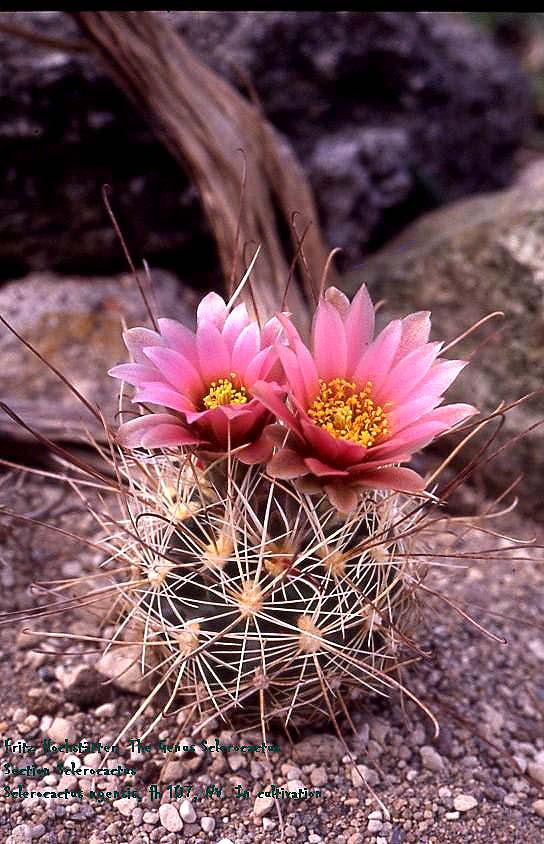
|
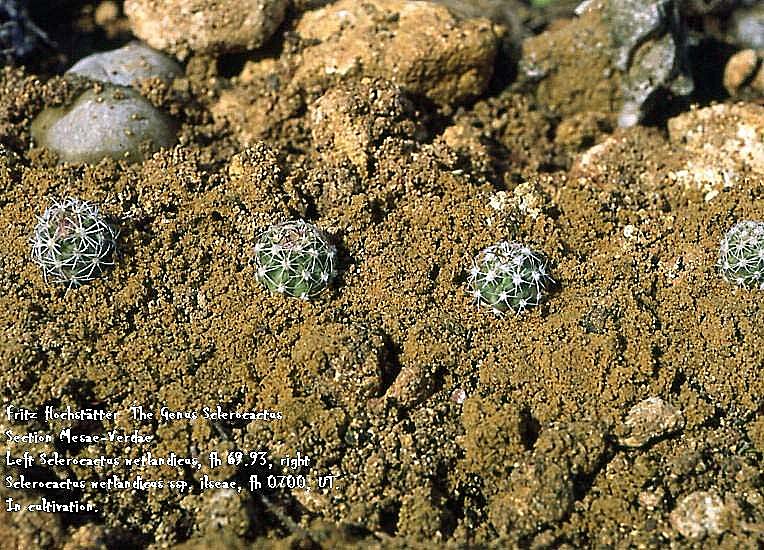
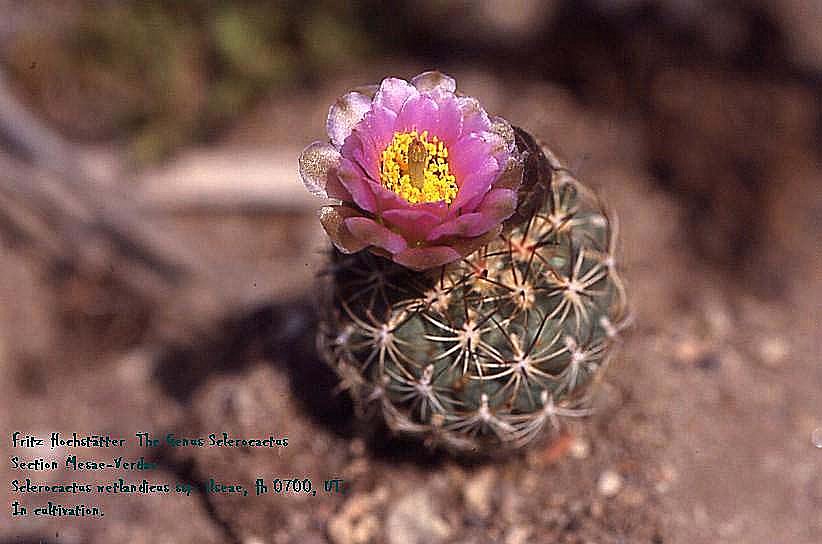
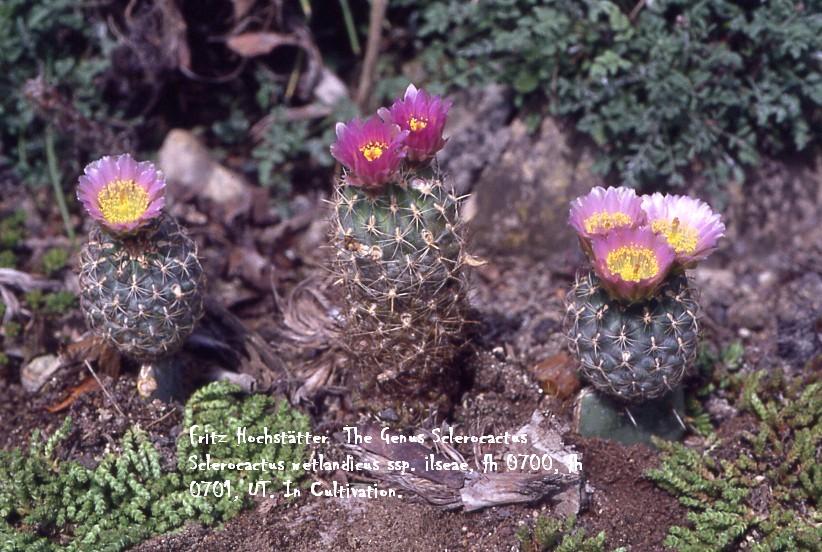
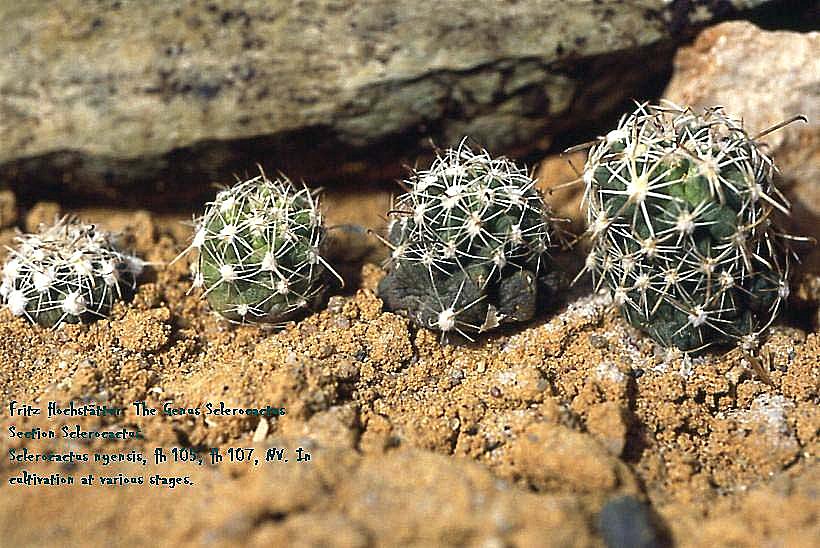
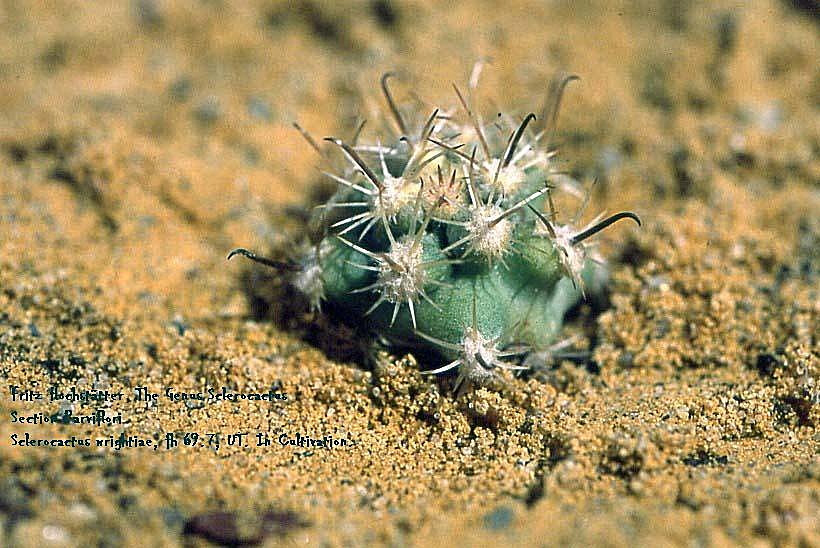
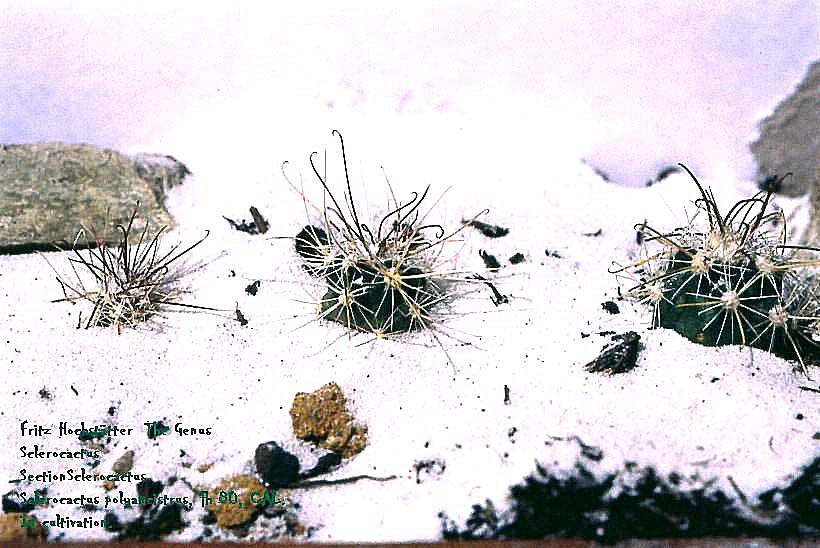
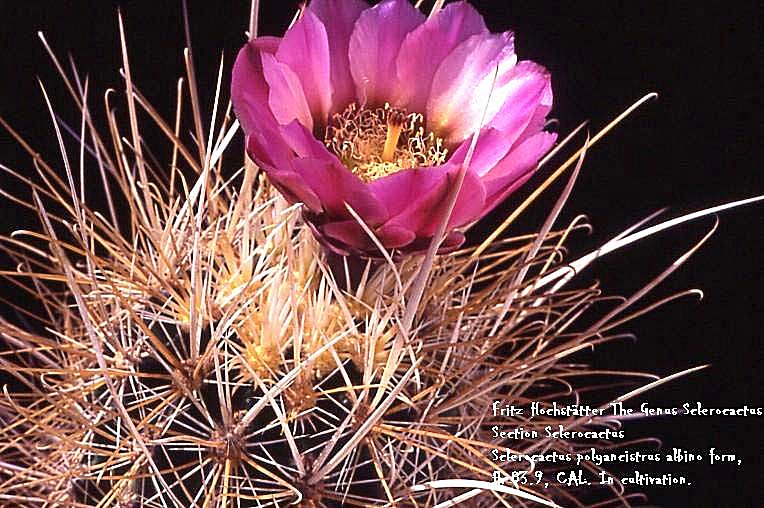
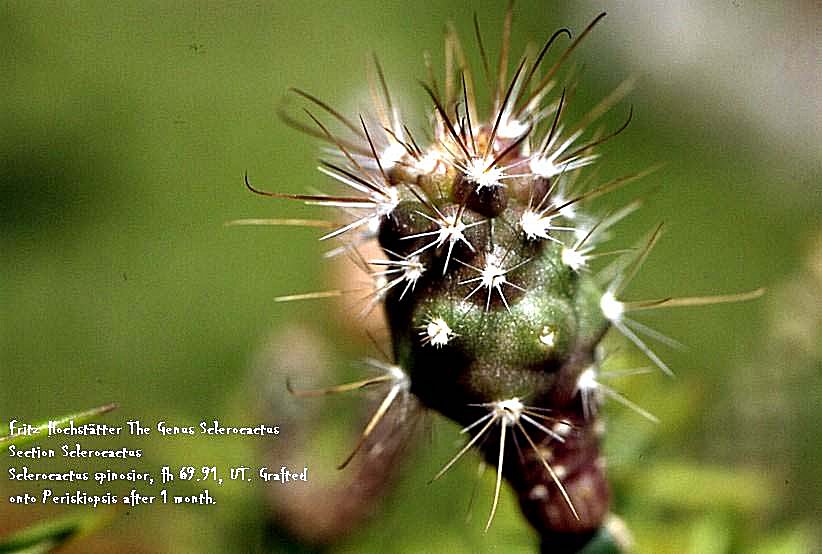
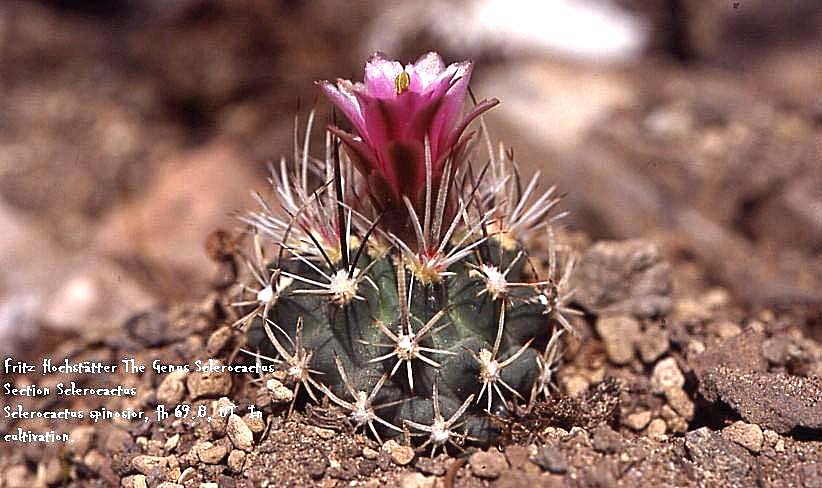
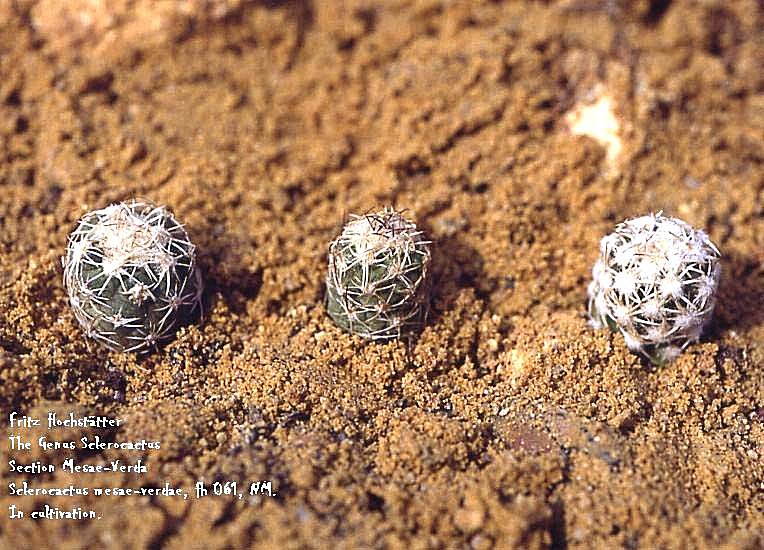
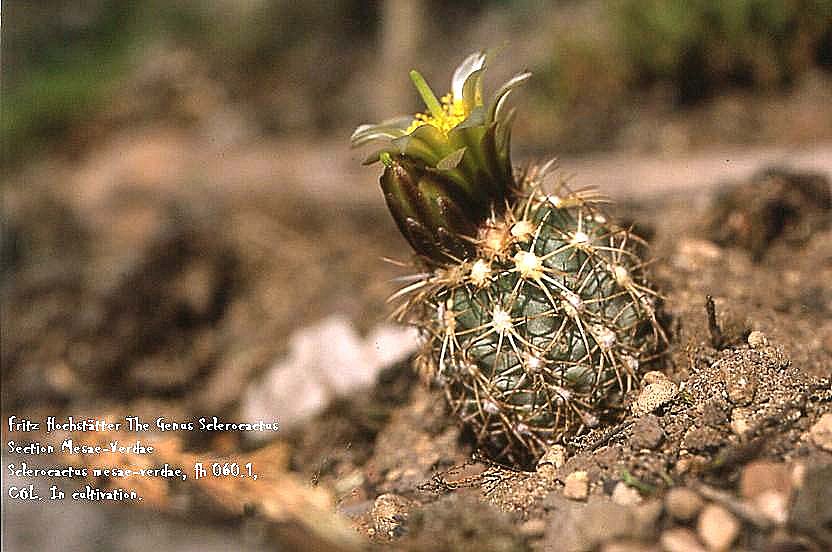
All pictures and contents of the Exotic Forum (fhnavajo.community.host.de or Homepage) are protected by copyright. All publications and duplications, in full or in part, photo-mechanical or electronic duplication, and translation requires my express written permission. Also the selling of this Homepage or an individual part requires my written permission. Criminal offences will be pursued.